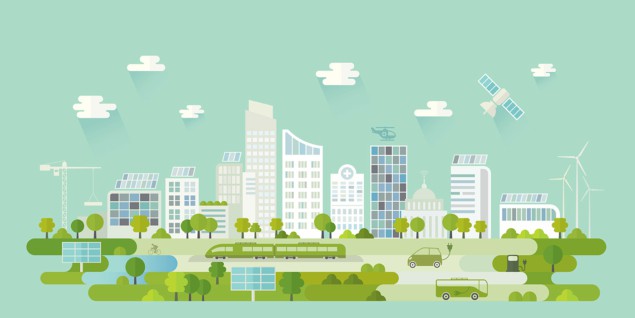
Expansions of built-up areas in South America are largely occurring away from major urban centres, a study of night-time satellite images has shown. The finding could inform attempts to reduce the harm from such expansion and protect South America’s globally important areas of biodiversity.
Dense cities are by no means the only form of built environment. “Rural areas like farms, towns, and villages, and transport networks such as roads, railways, and canals are all major contributors to society,” says María José Andrade-Núñez of the University of Puerto Rico. “As our population and global interaction increases, human infrastructures will inevitably expand into natural environments.”
Andrade-Núñez and colleague Thomas Mitchell Aide analysed night-time US Air Force satellite images from 2001 to 2011 to discover how land use is changing across the continent. Despite South America’s highly urbanised population, the built environment didn’t expand significantly around its 30 largest cities. Rather, the bulk of expansion was seen in towns with under 50,000 inhabitants, and in remote rural regions.
Increases in population and the global economy have driven expansion in South America, with projects including extension of pasture and croplands, and mines and hydroelectric dams that need extensive new infrastructure. In a continent containing 39 of Earth’s 137 “most irreplaceable areas for biodiversity conservation”, according to the International Union for Conservation of Nature, the expansion could have significant, potentially irreversible consequences for natural ecosystems.
Andrade-Núñez and Aide believe their work provides a valuable baseline for informing major organisations about the environmental implications of an increasingly globalized economy.
“Our work reveals the huge implications which built-up expansion has for South America’s biodiversity, including deforestation, fragmentation, and degradation within valuable ecosystems,” says Andrade-Núñez. “Through these findings, we hope to promote sustainable development approaches and land use policies which mitigate the undesired effects of the built environment.”
Previous research aimed to evaluate changes in the built environment by focusing on developments in large cities; South America has 30 cities with over 1 million inhabitants.
“These studies are useful for mapping urban areas, forecasting their expansion, and assessing their environmental impacts, but haven’t yet considered how infrastructures in rural areas and smaller cities are expanding,” says Andrade-Núñez. “This information is valuable as cities are connected to other urban and rural areas through complex webs of social, economic and environmental variables.”
Andrade-Núñez and Aide concluded that examining built-environment expansion requires studying all infrastructure related to humans and their activities.
The team reported the findings in Environmental Research Letters (ERL).



